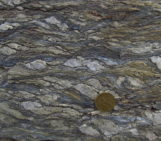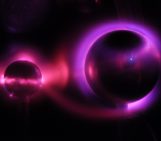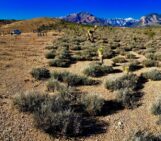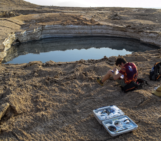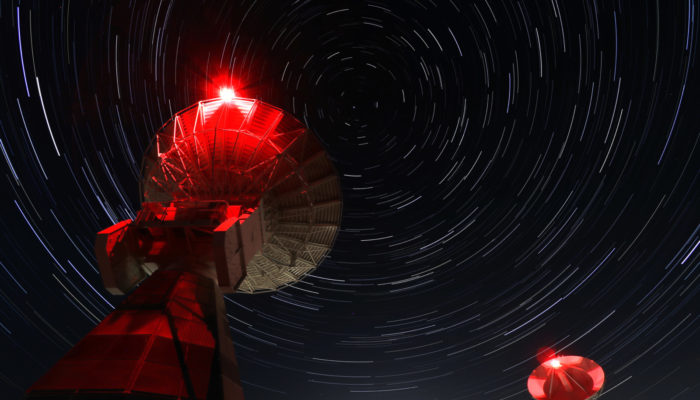
“The Onsala Twin Telescopes are part of the global geodetic Very Long Baseline Interferometry (VLBI) network. Radio telescopes all around the globe are observing extra-galactic radio sources simultaneously to determine Earth orientation parameters, source positions and station coordinates, as well as velocities. Geodetic Very Long Baseline Interferometry is used to maintain the International Terrestrial Reference Frame as well as the International Celestial Reference Frame. Popular results derived from geodetic Very Long Baseline Interferometry are plate tectonics, nutation and precession of the Earth and the solar time ‘UT1’.
The Onsala Twin Telescopes was inaugurated in 2017 and are fully compatible to the Very Long Baseline Interferometry Global Observing System. That means the telescopes can reach any point on the sky within 30 seconds and are equipped with broadband receivers. This image was created by stacking 160 individual images. The combined exposure time is 80 minutes.”
Description by Armin Corbin, finalist in the EGU20 Photo Competition, after the description on imaggeo.egu.eu.
Imaggeo is the EGU’s online open access geosciences image repository. All geoscientists (and others) can submit their photographs and videos to this repository and, since it is open access, these images can be used for free by scientists for their presentations or publications, by educators and the general public, and some images can even be used freely for commercial purposes. Photographers also retain full rights of use, as Imaggeo images are licensed and distributed by the EGU under a Creative Commons licence. Submit your photos at http://imaggeo.egu.eu/upload/.

